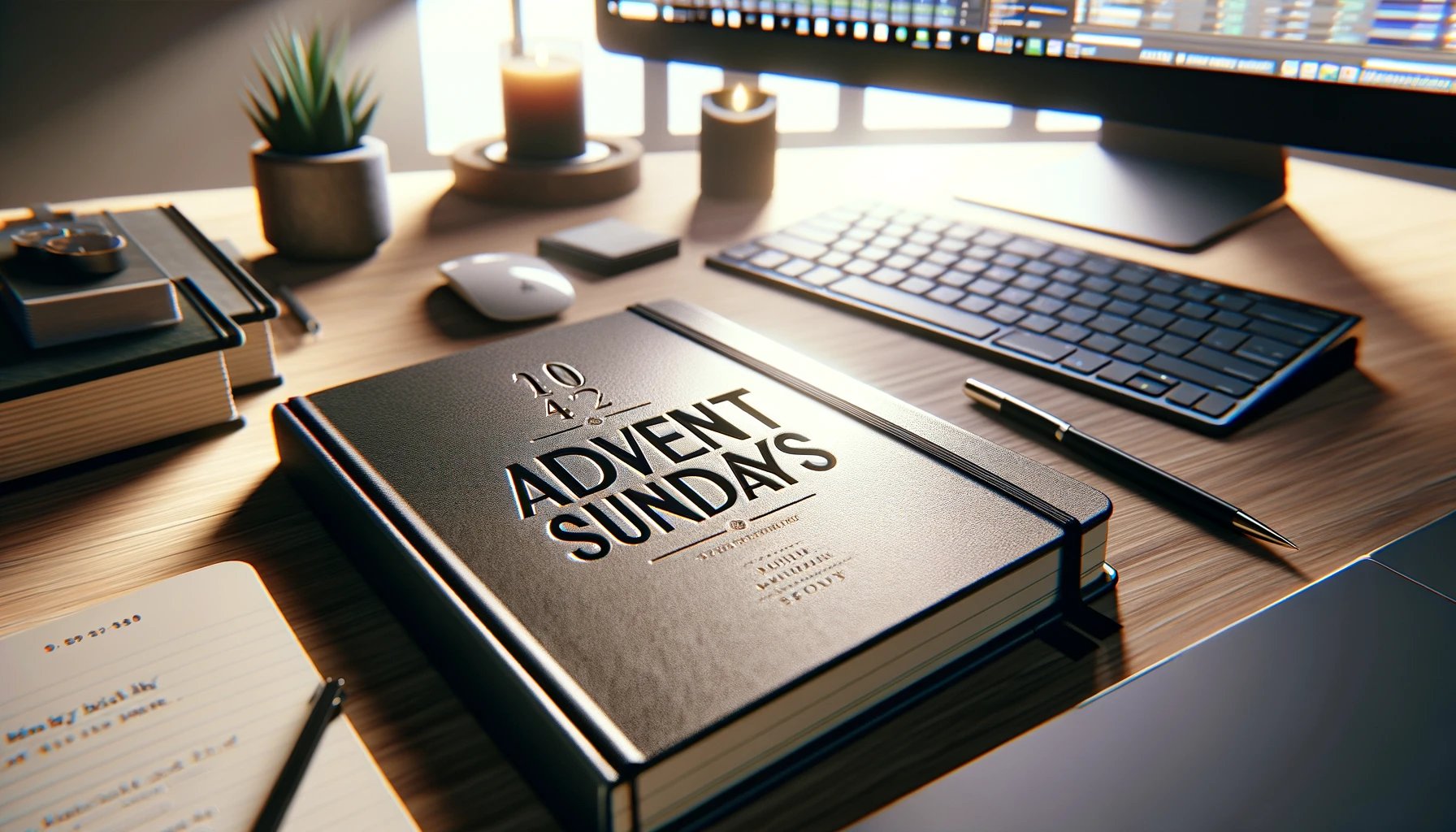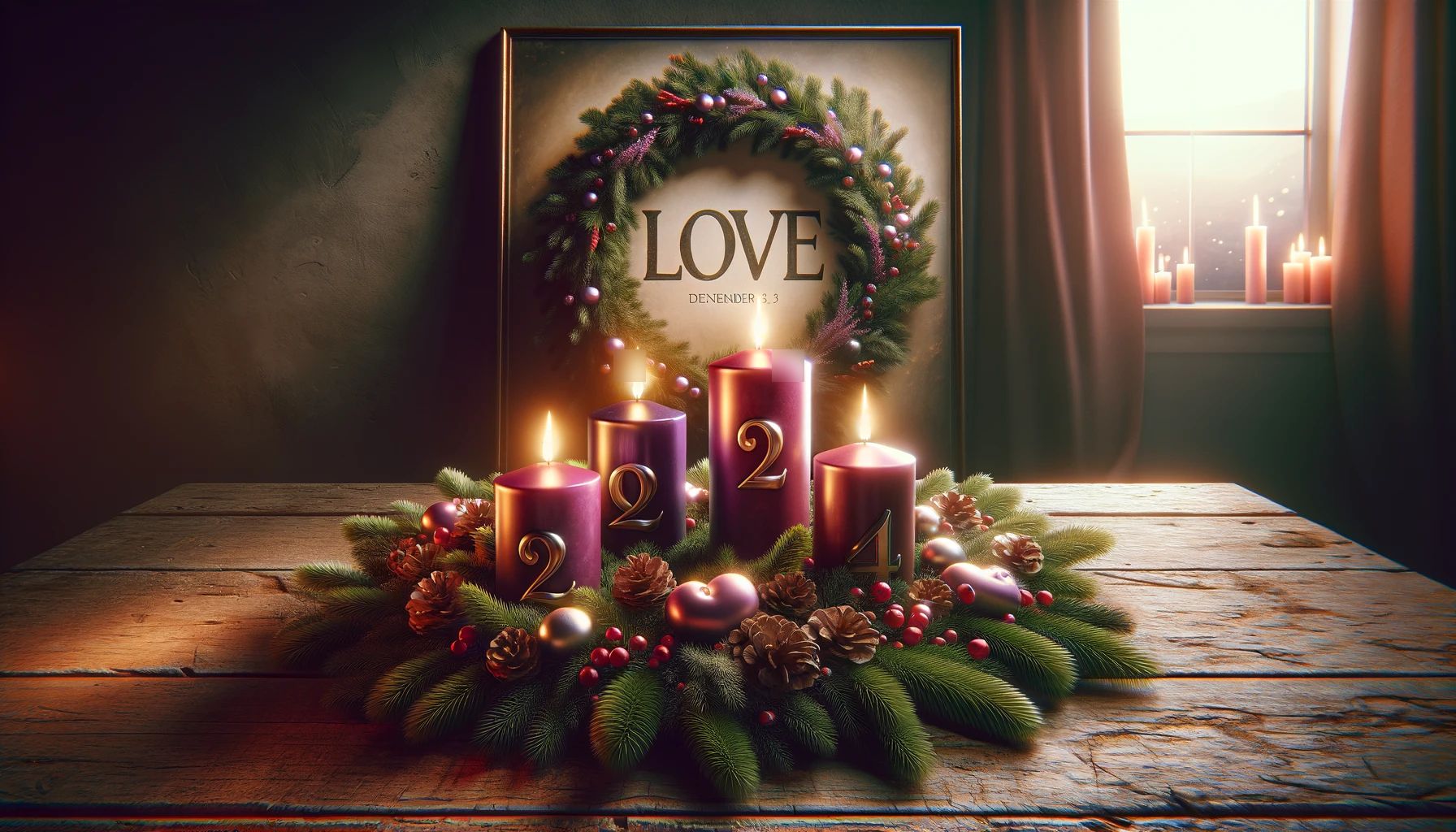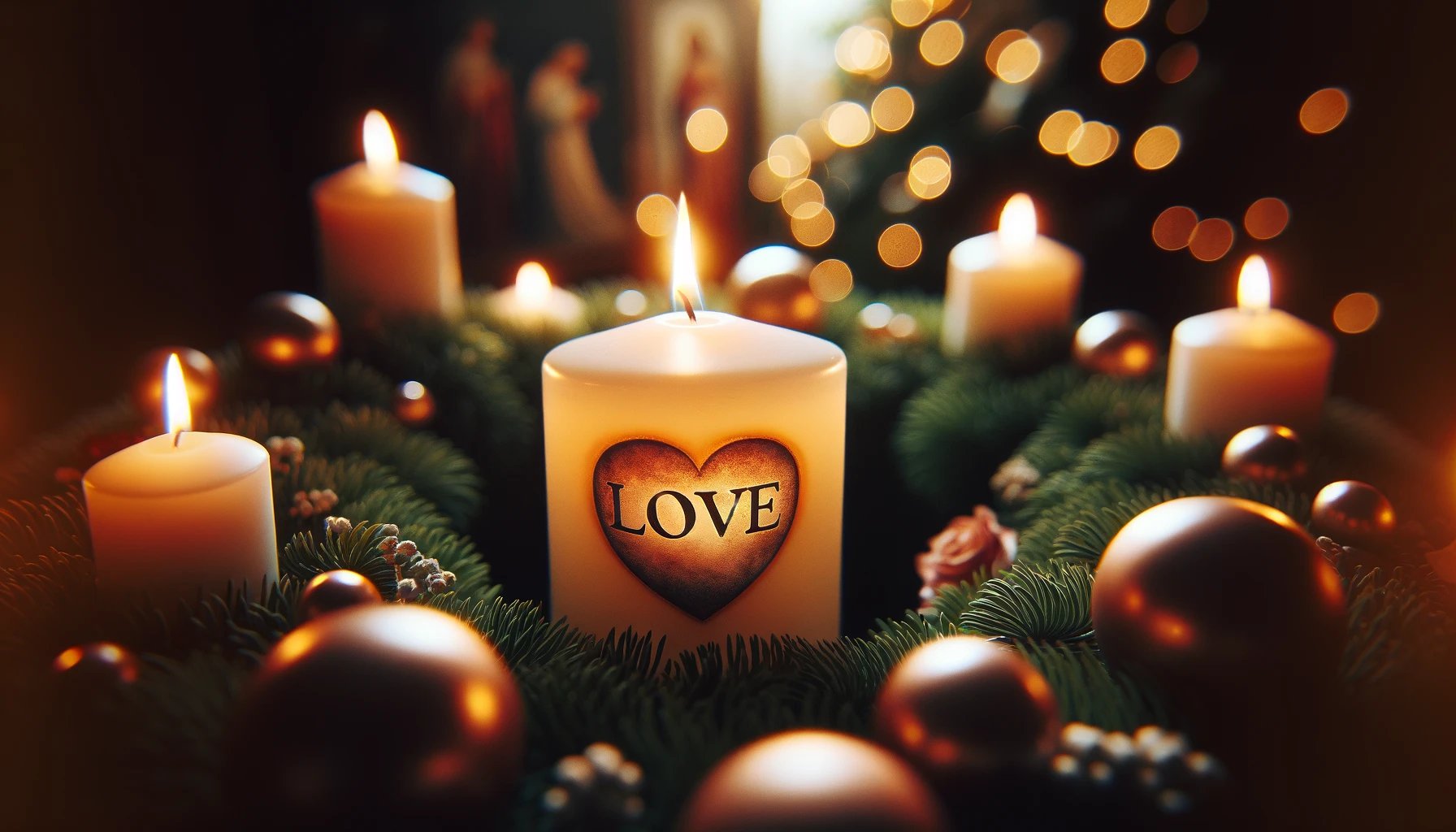Home>Special Themes>What Does Advent Candles Represent


Special Themes
What Does Advent Candles Represent
Published: February 14, 2024
Jason DeRose, Managing Editor at Christian.net, uses his expertise in religion and journalism to deepen understanding of faith's societal impacts. His editorial leadership, coupled with a strong academic background, enriches the platform’s diverse content, earning him recognition in both journalism and religious circles.
Discover the significance of Advent candles and their representation of special themes. Uncover the meaning behind each candle and its role in the Advent season.
(Many of the links in this article redirect to a specific reviewed product. Your purchase of these products through affiliate links helps to generate commission for Christian.net, at no extra cost. Learn more)
Table of Contents
Introduction
Advent, derived from the Latin word "adventus," meaning "coming," is a significant period observed by Christians around the world. It marks the anticipation of the birth of Jesus Christ and the preparation for the celebration of Christmas. One of the most enduring and symbolic traditions of Advent is the lighting of the Advent candles. These candles hold profound meaning and serve as a visual representation of the spiritual journey towards the birth of Jesus.
The tradition of using Advent candles dates back to the early 19th century in Germany, where a large wooden ring with 24 small candles was used to count down the days until Christmas. Over time, this practice evolved into the use of four candles, each representing a different aspect of the Advent season.
The lighting of Advent candles is a cherished ritual that brings families and communities together, fostering a sense of unity and spiritual reflection. As each candle is lit on the four Sundays leading up to Christmas, it serves as a reminder of the hope, love, joy, and peace that Christ's birth brings to the world.
Throughout the centuries, the symbolism and significance of Advent candles have remained steadfast, offering a timeless and meaningful tradition that continues to resonate with people of faith. In the following sections, we will delve into the rich history and symbolism of Advent candles, exploring the profound meaning behind each candle and how they are used to mark the journey towards the celebration of Christmas.
Read more: What Does The Fourth Advent Candle Represent
History of Advent Candles
The history of Advent candles can be traced back to the early 19th century in Germany, where the tradition of counting down the days until Christmas with candles began. Initially, a large wooden ring holding 24 small candles was used for this purpose. Each day, a candle would be lit, marking the progression towards the much-anticipated Christmas celebration.
Over time, this practice evolved into the use of four candles, each representing a different aspect of the Advent season. The tradition of the Advent wreath, with its four candles, gained popularity and spread to other parts of Europe and eventually to the United States and beyond.
The symbolism of the Advent candles became intertwined with the spiritual significance of the Advent season. The candles came to represent the hope, love, joy, and peace that Christ's birth brought into the world. As the tradition of Advent candles continued to evolve, it became a cherished ritual in Christian households and congregations, symbolizing the anticipation and preparation for the arrival of the Christ child.
The Advent wreath, with its four candles, became a focal point of spiritual reflection and communal gathering during the Advent season. Families and communities would come together to light the candles, recite prayers, and sing hymns, fostering a sense of unity and shared faith.
Today, the lighting of Advent candles remains a beloved tradition for many, serving as a visual and symbolic reminder of the spiritual journey towards Christmas. The history of Advent candles is a testament to the enduring power of tradition and the profound significance of simple yet meaningful rituals in the lives of believers around the world.
Symbolism of Advent Candles
The symbolism of Advent candles holds deep spiritual significance, representing the core themes of the Advent season and the anticipation of the birth of Jesus Christ. Each aspect of the candles, from their colors to the order in which they are lit, carries profound symbolism that resonates with the faithful during this sacred time.
Hope
The first candle, often known as the "Prophet's Candle" or the "Candle of Hope," symbolizes the eager anticipation of the Messiah's coming. Its purple color reflects the penitential aspect of Advent, signifying a period of preparation and reflection. As this candle is lit on the first Sunday of Advent, it serves as a beacon of hope, reminding believers of the promise of salvation and the fulfillment of God's covenant with His people.
Love
The second candle, often referred to as the "Bethlehem Candle" or the "Candle of Love," continues to build upon the anticipation of Christ's birth. Its purple hue maintains the solemnity of the season while emphasizing the love of God manifested through the incarnation of Jesus. As this candle is lit on the second Sunday of Advent, it serves as a poignant reminder of the boundless love that led to the divine birth in Bethlehem, igniting a sense of warmth and compassion in the hearts of believers.
Read more: What Does The 3rd Candle Of Advent Represent
Joy
The third candle, known as the "Shepherd's Candle" or the "Candle of Joy," introduces a shift in tone as it embodies the joyous anticipation of the Savior's arrival. Its pink or rose color symbolizes the joy and rejoicing that accompany the imminent fulfillment of God's promise. Lit on the third Sunday of Advent, this candle exudes a sense of jubilation, inspiring believers to embrace the profound joy brought forth by the imminent birth of Jesus Christ.
Peace
The fourth candle, often called the "Angel's Candle" or the "Candle of Peace," represents the culmination of the Advent journey, heralding the imminent arrival of the Prince of Peace. Its purple hue maintains the reverent atmosphere while emphasizing the tranquility and harmony that Christ's birth brings to the world. Lit on the fourth Sunday of Advent, this candle serves as a powerful symbol of the peace that transcends all understanding, inviting believers to embrace the serenity and wholeness found in the promise of Christ's coming.
The symbolism of Advent candles weaves a tapestry of spiritual significance, guiding believers through a journey of hope, love, joy, and peace as they prepare their hearts for the celebration of Christmas. Each candle, with its unique symbolism, contributes to the rich tapestry of the Advent season, fostering a sense of spiritual reflection and anticipation as the faithful await the arrival of the Christ child.
Meaning of Each Candle
The Advent season is rich with symbolism, and the lighting of the four Advent candles holds profound significance, representing the core themes of hope, love, joy, and peace. Each candle, with its unique color and symbolism, contributes to the spiritual tapestry of the Advent season, guiding believers through a journey of anticipation and preparation for the celebration of Christmas.
The first candle, often referred to as the "Prophet's Candle" or the "Candle of Hope," embodies the eager anticipation of the Messiah's coming. Its purple color reflects the penitential aspect of Advent, signifying a period of preparation and reflection. As this candle is lit on the first Sunday of Advent, it serves as a beacon of hope, reminding believers of the promise of salvation and the fulfillment of God's covenant with His people.
The second candle, often known as the "Bethlehem Candle" or the "Candle of Love," continues to build upon the anticipation of Christ's birth. Its purple hue maintains the solemnity of the season while emphasizing the love of God manifested through the incarnation of Jesus. As this candle is lit on the second Sunday of Advent, it serves as a poignant reminder of the boundless love that led to the divine birth in Bethlehem, igniting a sense of warmth and compassion in the hearts of believers.
The third candle, known as the "Shepherd's Candle" or the "Candle of Joy," introduces a shift in tone as it embodies the joyous anticipation of the Savior's arrival. Its pink or rose color symbolizes the joy and rejoicing that accompany the imminent fulfillment of God's promise. Lit on the third Sunday of Advent, this candle exudes a sense of jubilation, inspiring believers to embrace the profound joy brought forth by the imminent birth of Jesus Christ.
The fourth candle, often called the "Angel's Candle" or the "Candle of Peace," represents the culmination of the Advent journey, heralding the imminent arrival of the Prince of Peace. Its purple hue maintains the reverent atmosphere while emphasizing the tranquility and harmony that Christ's birth brings to the world. Lit on the fourth Sunday of Advent, this candle serves as a powerful symbol of the peace that transcends all understanding, inviting believers to embrace the serenity and wholeness found in the promise of Christ's coming.
The meaning of each Advent candle intertwines with the overarching narrative of the Advent season, guiding believers through a journey of spiritual reflection and anticipation as they prepare their hearts for the celebration of Christmas. As the candles are lit successively, they illuminate the path towards the birth of Jesus, infusing the season with profound meaning and spiritual significance.
How Advent Candles are Used
The ritual of using Advent candles is a cherished tradition that holds deep spiritual significance for individuals, families, and congregations during the Advent season. The lighting of the Advent candles is a symbolic and ceremonial practice that marks the progression of the four weeks leading up to Christmas, serving as a visual representation of the anticipation and preparation for the birth of Jesus Christ.
Typically, the Advent candles are arranged in a wreath, with three purple or blue candles, one pink or rose candle, and a central white candle. The wreath itself holds symbolic meaning, representing the eternal nature of God and the encompassing love of Christ. The first candle, the Candle of Hope, is lit on the first Sunday of Advent, followed by the Candle of Love on the second Sunday, the Candle of Joy on the third Sunday, and the Candle of Peace on the fourth Sunday. The central white candle, known as the Christ Candle, is traditionally lit on Christmas Eve or Christmas Day, signifying the culmination of the Advent season and the celebration of the birth of Jesus.
The lighting of the Advent candles is accompanied by prayers, readings, and reflections that correspond to the theme of each candle. Families and congregations gather around the Advent wreath, creating a sacred space for spiritual contemplation and communal worship. As each candle is lit, it serves as a focal point for meditation and reflection, guiding participants through a journey of hope, love, joy, and peace.
The ritual of lighting the Advent candles fosters a sense of unity and shared faith within the community. It provides an opportunity for individuals to pause and engage in meaningful dialogue about the significance of the Advent season, deepening their connection to the spiritual themes embodied by each candle. The gentle glow of the candles creates an atmosphere of reverence and anticipation, inviting participants to embrace the profound symbolism of the season.
Beyond the communal setting, many individuals incorporate the tradition of Advent candles into their personal devotional practices. Lighting the candles at home provides a sacred moment for quiet contemplation and prayer, allowing individuals to connect with the spiritual essence of the Advent season on a personal level.
In essence, the use of Advent candles serves as a powerful and evocative way to engage with the spiritual journey towards Christmas. The ritual of lighting the candles, accompanied by prayer and reflection, creates a meaningful and transformative experience that resonates deeply with the faithful, fostering a sense of spiritual renewal and anticipation as they prepare to celebrate the birth of Jesus Christ.
Read more: What Do The 5 Candles Of Advent Represent?
Conclusion
The tradition of Advent candles embodies the timeless essence of the Advent season, serving as a poignant reminder of the spiritual journey towards the celebration of Christmas. From its humble origins in 19th century Germany to its widespread adoption across Christian communities worldwide, the symbolism and ritual of Advent candles continue to resonate deeply with believers, fostering a sense of unity, reflection, and anticipation.
As the first candle, the Candle of Hope, is lit, it ignites a spark of eager anticipation, reminding us of the promise of salvation and the fulfillment of God's covenant with His people. The subsequent lighting of the Candle of Love, Candle of Joy, and Candle of Peace guides us through a transformative journey of spiritual contemplation, embracing the boundless love, profound joy, and transcendent peace that Christ's birth brings to the world.
The ritual of lighting the Advent candles, whether in communal gatherings or personal devotional practices, creates a sacred space for prayer, reflection, and shared faith. It fosters a sense of connection to the rich tapestry of the Advent season, inviting believers to immerse themselves in the profound symbolism of each candle and the overarching narrative of anticipation and preparation.
The Advent wreath, adorned with its four candles and the central Christ Candle, stands as a visual representation of the eternal nature of God and the encompassing love of Christ. It serves as a focal point for spiritual contemplation, guiding us through the progression of the Advent season and culminating in the joyous celebration of the birth of Jesus.
As we reflect on the symbolism and significance of Advent candles, we are reminded of the enduring hope, boundless love, profound joy, and transcendent peace that Christ's birth brings into our lives. The tradition of Advent candles continues to inspire and uplift, fostering a sense of spiritual renewal and anticipation as we prepare to welcome the Christ child into our hearts and homes.
In essence, the tradition of Advent candles transcends time and tradition, weaving a narrative of faith, hope, and love that resonates across generations. It serves as a timeless reminder of the profound significance of the Advent season, inviting us to embrace the spiritual journey towards Christmas with open hearts and renewed spirits.













